The thriving post-war architectural firm ultimately known as the Reid Partnership traced its origins back to the pre-war practice of Keith Reid. Born
in Richmond on 20 October 1906, Reid completed his
education at Swinburne Technical College and the University of
Melbourne Architectural
Atelier. Concurrent with his studies, in the late 1920s, he was
employed in the office of Cedric Ballantyne (1876-1954), where
he worked on the Regent Theatre in Collins Street. During the lean depression years, Reid and his friend Rae Featherstone worked
together, making models for the SEC to illustrate how electricity could
be used in buildings. During this period, Reid also distinguished
himself in several
architectural competitions. In 1930, his scheme for a new St
Kilda Town Hall won second prize in the RVIA Silver Medal competition.
Later that year, he entered the RVIA Ideal Homes
Competition and was awarded first first prize in two different
categories:
Type A (Single Storey) and Type B (Double Storey). One of his
winning entries, designed in an English cottage style, was described in
the press as "a very happy and refreshing contribution to domestic
architecture".
Around 1931, Reid entered into partnership with Sydney-born John Andrew "Jock" Pearson (1908-1987). Their most celebrated project (designed in association with Stuart Calder) was the stylish Streamlined Moderne showroom for MacPhersons Ltd in Collins Street. The building was much lauded locally, and was even published overseas in an American journal, the Architect & Engineer. While the firm of Reid & Pearson undertook some residential and commercial commissions, the bulk of their output was ecclesiastical projects - mostly for the Presbyterian church - which would form the mainstay of Reid's career for several decades. Architecturally, their work displayed an interesting hybrid character, combining fashionable historicist styles with cutting-edge planning and detailing. A block of flats in Toorak, for example, was lauded by the Argus as a "very modern adaptation of the English cottage style", whilst incorporating up-to-date facilities such as compact kitchens with ventilated cupboards, dedicated storage areas and other modern labour-saving devices. It was also during this period of flourishing professional activity that Reid married Ailsa Graham Bow; the couple had three sons.
The partnership of Reid & Pearson ceased with the onset of the Second World War. In the early wartime years , Reid was employed by the Commonwealth Department of Munitions. Then, in June 1943, he enlisted with the Australian Army and, like many other architects, served with the Royal Engineers. Discharged in October 1946 with the rank of Lieutenant, Reid returned to civilian life in Melbourne and resumed private practice under his own name. As had been the case during the 1930s, Reid concentrated on ecclesiastical projects. Around 1950, he formed a partnership with K Murray Forster (1907-1967), an architect who also undertook much work for the Presbyterian church. The two men rented office space in the upstairs front room of a two-storey terrace house on Latrobe Street (the rear room being occupied by another architect, Horace Tribe, with whom Reid had studied at the atelier). Despite the mutual Presbyterian connection, the partnership of Reid & Forster did not prove successful. It ended amicably in 1951, with the two former partners continuing to share the same office space for some years thence. Reid took on several staff, including English-born draftsman Ray Godfrey and, later, Austrian emigre Hugh Schroeder, later to become a noted architect in his own right.
In his post-war practice, Reid continued to specialised in church projects. As was the case in the pre-war years, Reid's churches were often characterised by traditional exteriors with modern interiors. A church at Glen Iris (1954) was designed in a "refined conventional style" reminiscent of Perpendicular Gothic, yet included such internal innovations as a separate children's chapel, and a projection room contained in the tower. Later, Reid developed a style that expressed traditional ecclesiastical forms in a modernist vocabulary. This is typified by his Baptist Church in Canterbury (1962), which had a transept with fashionable zigzagging roof, a stylized tower with vertical fins and narrow spire, and a stained glass window-wall articulated with fin-like piers. In a particularly striking example at Horsham (also 1962), Reid used a jagged plan form that was echoed in an eye-catching roofline, with a projecting diamond-shaped belvedere.
In 1963, Keith’s eldest son John Reid joined the practice and was admitted into partnership in 1967, forming Keith Reid and John R Reid, Architects. John, who had matriculated in 1955 as a Dux of Art at Scotch College, entered Melbourne University on a Commonwealth Scholarship. During the five-year course, he won the CSR Prize for General Excellence, the Dunlop Rubber Prize, the Tasmanian Timber Prize, the James F Brett Plywood Design Prize and the Picton Hopkins Design Prize. He was an Exchange Student to the USA in 1959 and graduated with Honours and the Stephenson & Turner Medal for Top Student in 1960. After graduation he travelled and worked in Europe and the USA including a stint in the New York office of I M Pei. Like his father, John won early acclaim in design competitions including housing contests sponsored by the RAIA Small Homes Service, second prize in the Melbourne Civic Square Competition of 1969 and third prize for the same competition in 1976 and second prize in the Merchant Builders System House Competition in 1971. The house that John designed for his family at Lower Templestowe in 1964 was selected by Architecture & Arts as "One of the Ten Best Buildings of the Year".
In the 1960s and '70s the practice of Keith Reid and John R Reid became well known for private residential commissions and expanded into sporting stadiums and State Bank Victoria branches. The latter association, which came about after a SSB architect visited John's own house for a final inspection as a condition of his bank loan, saw John serve as partner-in-charge of 127 State Bank Victoria projects between 1966 and 1989. Of these, the most important was the complete redevelopment of the Ballarat branch (1972-75), which involved the retention and adaptation of existing historic buildings as well as new work, all undertaken while the bank remained in daily operation. John has served on the RAIA Education Committee, and in later years on the RAIA Complaints Committee. He was a Visiting Design Lecturer at Melbourne University from 1963 to 1975 and was elected as a Fellow of the RAIA in 1983.
Perhaps inevitably, the practice was also joined by Keith Reid's other architect son, Graham Reid. Matriculating in 1966 with honours and a Commonwealth Scholarship, Graham completed his Bachelor of Architetcure at the University of Melbourne. During this student years, he continued the family tradition of winning prizes (including the coveted Nell Norris Scholarship) and competitions, notably the high-profile Blue Flame housing contest (1969) co-sponsored by the RAIA and the Gas & Fuel Corporation. Graham's design, and another submitted by brother John, were both erected as part of the Blue Flame display village in Vermont South (1970-71).
Joining the family firm in 1973, Graham was elevated to the position of director five years later, when the business was re-configured as the Reid Partnership Pty Ltd. It was Graham who was chiefly responsible for expanding the practice to encapsulate education projects, including many child care centres, primary and secondary schools. One notable achievement was the development of a modular system known as the "Core Plus" school, where relocatable classrooms were added to a core of permanent buildings (administration, library, art room and multi-purpose hall) around a central courtyard. Educational work also included buildings for tertiary institutions, notably the Victorian (now Australian) College of Optometry for the University of Melbourne. Graham also undertook a range of municipal projects including a masterplan for the interior the Collingwood Town Hall, and new municipal offices for the City of Coburg and Shire of Tambo.
Around 1931, Reid entered into partnership with Sydney-born John Andrew "Jock" Pearson (1908-1987). Their most celebrated project (designed in association with Stuart Calder) was the stylish Streamlined Moderne showroom for MacPhersons Ltd in Collins Street. The building was much lauded locally, and was even published overseas in an American journal, the Architect & Engineer. While the firm of Reid & Pearson undertook some residential and commercial commissions, the bulk of their output was ecclesiastical projects - mostly for the Presbyterian church - which would form the mainstay of Reid's career for several decades. Architecturally, their work displayed an interesting hybrid character, combining fashionable historicist styles with cutting-edge planning and detailing. A block of flats in Toorak, for example, was lauded by the Argus as a "very modern adaptation of the English cottage style", whilst incorporating up-to-date facilities such as compact kitchens with ventilated cupboards, dedicated storage areas and other modern labour-saving devices. It was also during this period of flourishing professional activity that Reid married Ailsa Graham Bow; the couple had three sons.
The partnership of Reid & Pearson ceased with the onset of the Second World War. In the early wartime years , Reid was employed by the Commonwealth Department of Munitions. Then, in June 1943, he enlisted with the Australian Army and, like many other architects, served with the Royal Engineers. Discharged in October 1946 with the rank of Lieutenant, Reid returned to civilian life in Melbourne and resumed private practice under his own name. As had been the case during the 1930s, Reid concentrated on ecclesiastical projects. Around 1950, he formed a partnership with K Murray Forster (1907-1967), an architect who also undertook much work for the Presbyterian church. The two men rented office space in the upstairs front room of a two-storey terrace house on Latrobe Street (the rear room being occupied by another architect, Horace Tribe, with whom Reid had studied at the atelier). Despite the mutual Presbyterian connection, the partnership of Reid & Forster did not prove successful. It ended amicably in 1951, with the two former partners continuing to share the same office space for some years thence. Reid took on several staff, including English-born draftsman Ray Godfrey and, later, Austrian emigre Hugh Schroeder, later to become a noted architect in his own right.
In his post-war practice, Reid continued to specialised in church projects. As was the case in the pre-war years, Reid's churches were often characterised by traditional exteriors with modern interiors. A church at Glen Iris (1954) was designed in a "refined conventional style" reminiscent of Perpendicular Gothic, yet included such internal innovations as a separate children's chapel, and a projection room contained in the tower. Later, Reid developed a style that expressed traditional ecclesiastical forms in a modernist vocabulary. This is typified by his Baptist Church in Canterbury (1962), which had a transept with fashionable zigzagging roof, a stylized tower with vertical fins and narrow spire, and a stained glass window-wall articulated with fin-like piers. In a particularly striking example at Horsham (also 1962), Reid used a jagged plan form that was echoed in an eye-catching roofline, with a projecting diamond-shaped belvedere.
In 1963, Keith’s eldest son John Reid joined the practice and was admitted into partnership in 1967, forming Keith Reid and John R Reid, Architects. John, who had matriculated in 1955 as a Dux of Art at Scotch College, entered Melbourne University on a Commonwealth Scholarship. During the five-year course, he won the CSR Prize for General Excellence, the Dunlop Rubber Prize, the Tasmanian Timber Prize, the James F Brett Plywood Design Prize and the Picton Hopkins Design Prize. He was an Exchange Student to the USA in 1959 and graduated with Honours and the Stephenson & Turner Medal for Top Student in 1960. After graduation he travelled and worked in Europe and the USA including a stint in the New York office of I M Pei. Like his father, John won early acclaim in design competitions including housing contests sponsored by the RAIA Small Homes Service, second prize in the Melbourne Civic Square Competition of 1969 and third prize for the same competition in 1976 and second prize in the Merchant Builders System House Competition in 1971. The house that John designed for his family at Lower Templestowe in 1964 was selected by Architecture & Arts as "One of the Ten Best Buildings of the Year".
In the 1960s and '70s the practice of Keith Reid and John R Reid became well known for private residential commissions and expanded into sporting stadiums and State Bank Victoria branches. The latter association, which came about after a SSB architect visited John's own house for a final inspection as a condition of his bank loan, saw John serve as partner-in-charge of 127 State Bank Victoria projects between 1966 and 1989. Of these, the most important was the complete redevelopment of the Ballarat branch (1972-75), which involved the retention and adaptation of existing historic buildings as well as new work, all undertaken while the bank remained in daily operation. John has served on the RAIA Education Committee, and in later years on the RAIA Complaints Committee. He was a Visiting Design Lecturer at Melbourne University from 1963 to 1975 and was elected as a Fellow of the RAIA in 1983.
Perhaps inevitably, the practice was also joined by Keith Reid's other architect son, Graham Reid. Matriculating in 1966 with honours and a Commonwealth Scholarship, Graham completed his Bachelor of Architetcure at the University of Melbourne. During this student years, he continued the family tradition of winning prizes (including the coveted Nell Norris Scholarship) and competitions, notably the high-profile Blue Flame housing contest (1969) co-sponsored by the RAIA and the Gas & Fuel Corporation. Graham's design, and another submitted by brother John, were both erected as part of the Blue Flame display village in Vermont South (1970-71).
Joining the family firm in 1973, Graham was elevated to the position of director five years later, when the business was re-configured as the Reid Partnership Pty Ltd. It was Graham who was chiefly responsible for expanding the practice to encapsulate education projects, including many child care centres, primary and secondary schools. One notable achievement was the development of a modular system known as the "Core Plus" school, where relocatable classrooms were added to a core of permanent buildings (administration, library, art room and multi-purpose hall) around a central courtyard. Educational work also included buildings for tertiary institutions, notably the Victorian (now Australian) College of Optometry for the University of Melbourne. Graham also undertook a range of municipal projects including a masterplan for the interior the Collingwood Town Hall, and new municipal offices for the City of Coburg and Shire of Tambo.
In 1990 the firm’s founder Keith Reid retired at the age of 84 and the Reid Partnership continued under John and Graham until November 1996, when it merged with Woodhead International and Graham became the firm's Regional Director for Victoria. One of the last surviving stalwarts of Melbourne’s pre-war architectural scene, Keith Reid died on 28 August 1999, aged 92 years.
Select List of Projects
Reid & Pearson (1931-1941)
| 1933 1935 1936 1937 1938 1939 1940 1941 | Showroom for MacPhersons Ltd, 546-566 Collins Street [with Stuart Calder] Block of flats, Toorak Residence, Coolangatta Road, Camberwell House, Bairnsdale Sunday School, St Andrew's Presbyterian Church, Oakleigh Residence, Geelong Road, Footscray Factory, Sunshine Road, Sunshine [with Stuart Calder] Sunday School, Presbyterian Ewing Memorial Church, Burke Road, East Malvern Site layout and buildings, Presbyterian Fellowship Association Camp, Mornington Church of St Michael of all the Angels, Mount Dandenong Residence, Mount Martha |
Keith Reid (1946-1949)
| 1946 1947 1948 | Presbyterian Church, Dundonnell St John's Church of England, Croydon Additions (including new kitchen), Kilmany Park Boys' Farm, Sale |
Keith Reid and K Murray Forster (1949-51)
| 1951 | Church, Red Bluff [near Wodonga] Public Hall, Welshpool Residence, Bolton Street, Beaumaris |
Keith Reid (1951-1964)
| 1951 1952 1953 1954 1955 1958 1959 1960 1962 1963 1964 | St Paul's Church of England, Gisborne Kindergarten Hall, Presbyterian Church, Wattle Park Hall, Presbyterian Church, Balwyn North Presbyterian Church, Glen Iris Presbyterian Manse, Ballarat Additions to Doctor's Residence, Plenty Road, Preston St Margaret's Presbyterian Church, Hull Road, Mooroolbark Residence for J Haysom, Mount Eliza Additions to St George's Church, Ryrie Street, Geelong Kindergarten Hall, Presbyterian Church, Reservoir Residence, Hampton St Columba's Presbyterian Church, Sale Presbyterian Church, The Avenue, Blackburn Presbyterian Church, Louisa Street, Coburg Presbyterian Church, Templestowe Baptist Church, 1a Balwyn Road, Canterbury St Andrew's Presbyterian Church, Horsham St Andrew's Presbyterian Church, Fowler Street, Moe Residence, 73 Oak Street, Beaumaris Baptist Church, Price Street, Aberfeldie Residence, Riverside Avenue, Ivanhoe |
Keith & John R Reid (1965-1978)
| 1965 1967 1969 1970 1972-75 1973 1974 1976 | Residence for John Reid, 72 Macedon Road, Templestowe Lower Residence, Argyle Street, Macelod Residence, Citron Avenue, Balwyn North Residence, Dellas Street, Templestowe NSK Ball Bearing Plant, Geelong Civic Square for the City of Melbourne [competition entry] Residence, Point Lonsdale Tarago Valley Masonic Lodge, 215 Main Neerim Road, Neerim South Redevelopment of banking premises for State Savings Bank, Ballarat Residence, Anglesea Residence, Ranleigh Rise, Templestowe Residence, Queenscliff |
Reid Partnership (1978-1996)
| 1978 1979 1982 1983 1984 1985 1986 1987 1991 1992 | St Albans Meadows Primary School, Laurel Street, St Albans Billanook Primary School, Montrose Municipal offices for City of Coburg, Bell Street, Coburg Public housing development, Glenmore Street, Box Hill Yarraville West Primary School, Powell Street, Yarraville Barry Beckett Child Care Centre, Connolly Avenue, Coburg Victorian (now Australian) College of Optometry, Cardigan and Keppel Streets, Carlton Civic Centre for Shire of Tambo, Palmers Road, Lakes Entrance Sports Stadium, Loyola College, Greensborough Additions to St Hilary's Anglican Church, Kew Public housing development, Mark and Buncle Streets, North Melbourne |
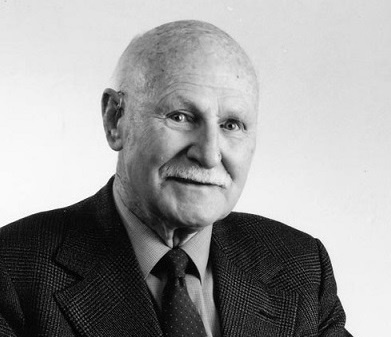 | |
| Keith Reid around the time of his retirement (source: courtesy John Reid, architect) |
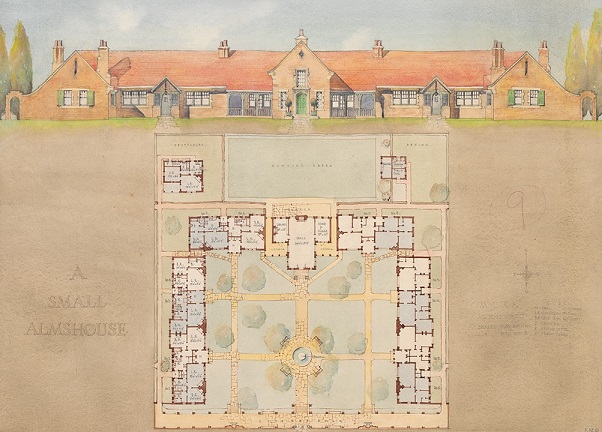 | |
| Project for an almshouse, prepared by Keith Reid at the Melbourne University Architectural Atelier (1928) |
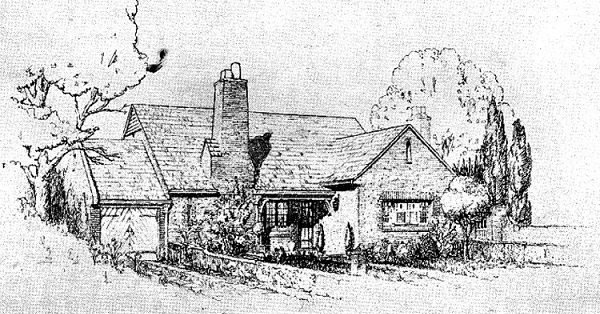 | |
| Keith Reid's prize-winning entry in 1930 RVIA Competition (source: courtesy John Reid, architect) |
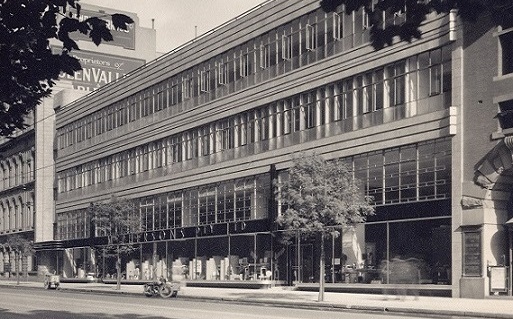 | |
| MacPhersons' Showroom, Collins Street (1936) (source: courtesy John Reid, architect) |
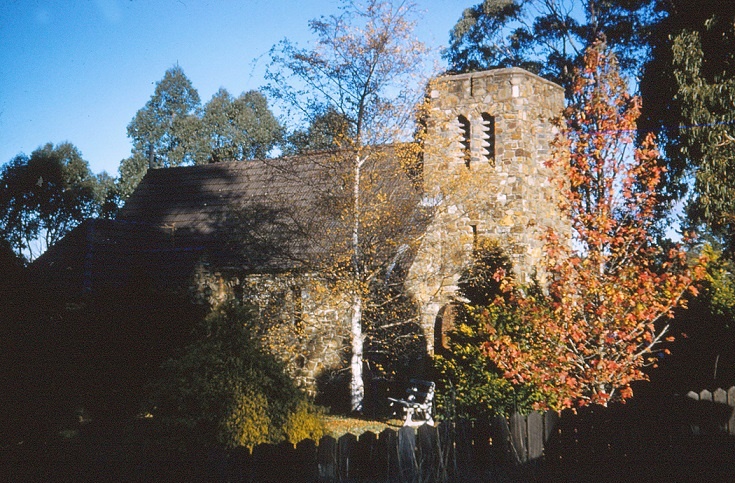 | |
| Church of St Michael of all Angels, Kalorama (1940) (source: courtesy John Reid, architect) |
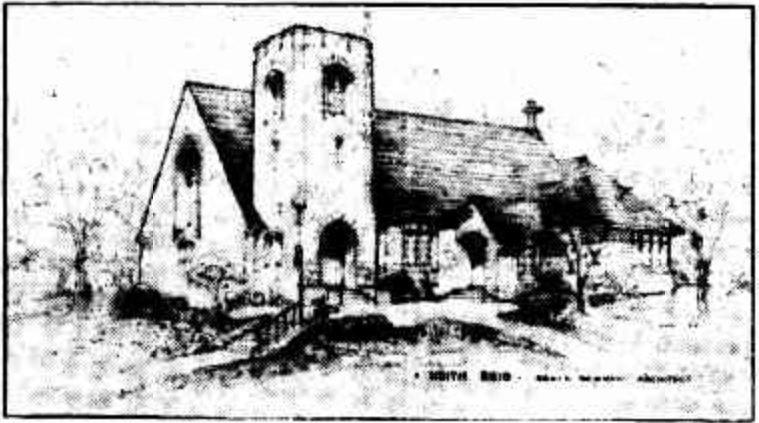 | |
| St John's Anglican Church, Croydon (1947) |
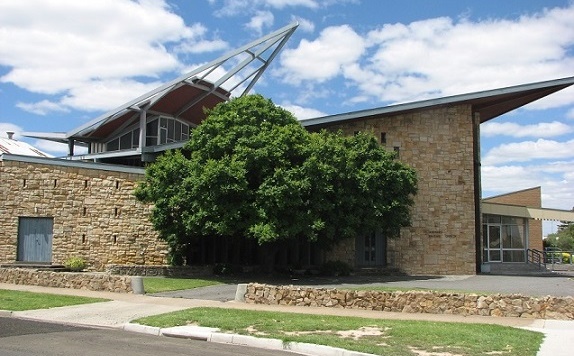 | |
| St Andrew's Presbyterian Church, Horsham (1963) (source: photograph by Built Heritage Pty Ltd) |
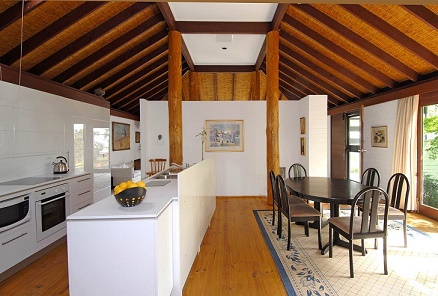 | |
| John Reid's own house in Templestowe (1964) (source: courtesy John Reid, architect) |
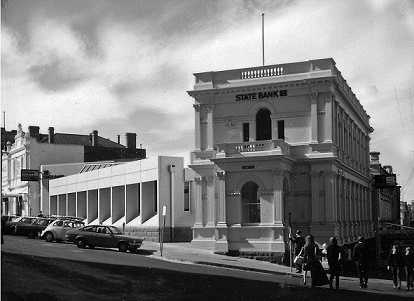 | |
| State Savings Bank of Victoria, Ballarat (1972-75) (source: courtesy John Reid, architect) |
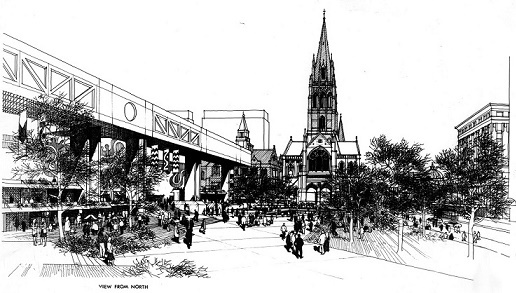 | |
| John Reid's third prize-winning entry in the design competition for the new Melbourne City Square (1976) (source: courtesy John Reid, architect) |
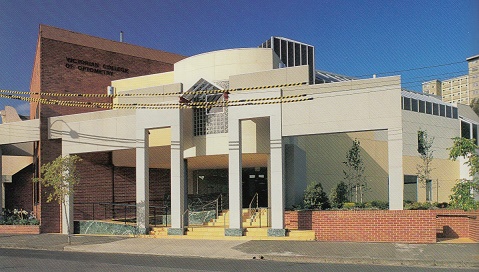 | |
| Victorian College of Optometry, Carlton (1986) (source: courtesy Graham Reid, architect) |
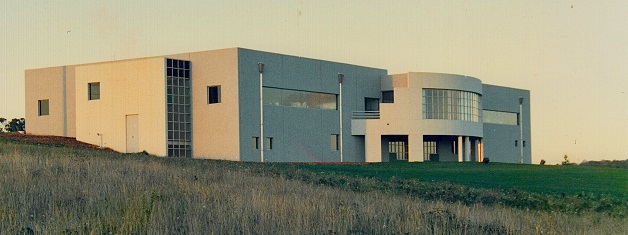 | |
| Civic Centre for Shire of Tambo, Lakes Entrance (1987) (source: courtesy Graham Reid, architect) |
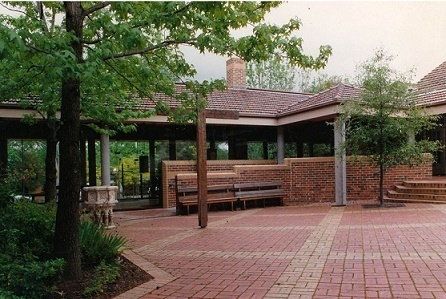 | |
| Additions to St Hilary's Anglican Church, Kew (1991) (source: courtesy John Reid, architect) |
| The author would like to acknowlede the input of Keith's sons and former partners, John and Graham Reid, for sharing recollections, documentation and historic images from their respective private collections. |
